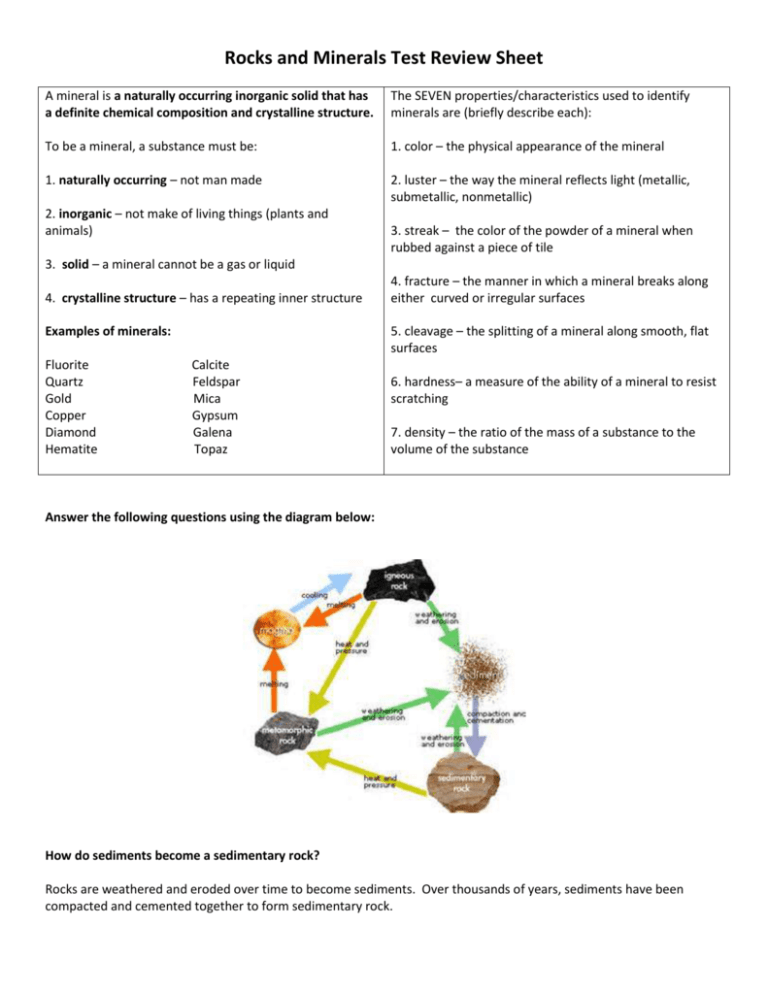Rocks and Minerals Test Review Sheet
advertisement

Rocks and Minerals Test Review Sheet A mineral is a naturally occurring inorganic solid that has a definite chemical composition and crystalline structure. The SEVEN properties/characteristics used to identify minerals are (briefly describe each): To be a mineral, a substance must be: 1. color – the physical appearance of the mineral 1. naturally occurring – not man made 2. luster – the way the mineral reflects light (metallic, submetallic, nonmetallic) 2. inorganic – not make of living things (plants and animals) 3. streak – the color of the powder of a mineral when rubbed against a piece of tile 3. solid – a mineral cannot be a gas or liquid 4. crystalline structure – has a repeating inner structure Examples of minerals: Fluorite Quartz Gold Copper Diamond Hematite 4. fracture – the manner in which a mineral breaks along either curved or irregular surfaces 5. cleavage – the splitting of a mineral along smooth, flat surfaces Calcite Feldspar Mica Gypsum Galena Topaz 6. hardness– a measure of the ability of a mineral to resist scratching 7. density – the ratio of the mass of a substance to the volume of the substance Answer the following questions using the diagram below: How do sediments become a sedimentary rock? Rocks are weathered and eroded over time to become sediments. Over thousands of years, sediments have been compacted and cemented together to form sedimentary rock. How does a metamorphic rock become an igneous rock? A metamorphic rock can become an igneous rock by melting into magma underneath the earth’s crust and cooled to form an igneous rock. Describe two ways in which an igneous rock can become a metamorphic rock. Way 1: An igneous rock can be weathered and eroded into sediments. Then the sediments are compacted and cemented together to form and sedimentary rock. Finally, the sedimentary rock undergoes a tremendous amount of heat and pressure deep within earth to form a metamorphic rock. Way 2: An intrusive igneous rock is exposed to heat and pressure under the earth’s crust and becomes a metamorphic rock. How does magma become sediments? Extrusive igneous rocks are weathered and eroded into sediments. What happens when an igneous rock is exposed to heat and pressure? An igneous rock exposed to heat and pressure becomes an metamorphic rock. Extra: The process of weathering and erosion creates what? Sediments How does an igneous rock become a sedimentary rock? An extrusive igneous rock is weathered and eroded into sediments. The sediments are compacted and cemented together to form a sedimentary rock. When a rock is exposed to heat and pressure, what type of rock is formed? Metamorphic






